Data Access Based on a Guide Map of the Underwater Wireless Sensor Network
Abstract
:1. Introduction
- (1)
- Efficient UWSN data access includes storage, discovery and query. Networks of different types generate different types of data, and the data on the sensor node needs to be collected and stored efficiently. At the same time, the query sentences from the users need to be dealt with as far as possible in order to return different granularity data (especially in military application and emergency rescue) to the users with the smallest delay possible.
- (2)
- There is the problem of energy consumption in the process of data storage and query. Energy consumption is huge due to the long distances and long underwater data transmission times, and this will shorten the network service life while increasing background noise in UWSN. Hence, in the processing of data storage and query, energy consumption of data transmission needs to be reduced and balanced as much as possible for the purpose of prolonging the network lifetime.
- (1)
- The DAGM system model is proposed so that the user (observation node) in an UWSN can access the specific application data and events it is concerned with as much as possible. The most challenging and difficult problems of DAGM have been analyzed;
- (2)
- The framework of DAGM is established. According to the shortest average query path of the network, the center ring structure composed of nodes is established for storing the metadata, and then the data map of the network is formed. In the meantime, data storage and query mechanisms are established to aid user access-specific application data and events quickly;
- (3)
- Data storage delay, data query delay, and a network energy consumption calculation model of DAGM are established, providing a method for the analysis of DAGM performance.
2. Related Works
3. System Model and Problem Description
3.1. System Model
- (1)
- The nodes are divided into three types: sensor nodes, storage nodes and center ring nodes. Each node can obtain its own location information (through the global positioning system (GPS) or locating protocol). The network is connected, and any two nodes can communicate through the multiple hops, assuming that the node has a small mobile range but it does not affect the communication and undermine the connectivity of network.
- (2)
- The network works in a two-dimensional plane. The nodes are deployed according to square lattice, with the network scope divided into regular square lattice. Each lattice has an ID number, and in terms of the nodes located in it, when each lattice consists of multiple sensor nodes, only one node is working, while the others are sleeping. Each node knows the situation of the deployment, such as the scope of network, neighbor nodes, and so on.
- (3)
- Each node can be considered as a data query user. They can send a data query sentence to the nearest center ring node at any time, and will not leave the location out of the communication range before the end of data query.
- (1)
- To establish the center ring structure. In the process of deployment, the scope of network is well divided into n × n square lattices, and sensor nodes are deployed at the inside of the square lattice. Then, the center ring structure is established as composed by nodes according to the shortest average user query path in the network for storing the metadata.
- (2)
- To store data in the network. When the sensor nodes generate data by monitoring the environment and detecting the target, the lattice ID number and location of the storage node is determined by the geographic harsh table (GHT). At the same time, the data will be transmitted to the storage node by multiple hops. Then, after the data stored, the storage node generates metadata that include the content abstract and storage location abstract for it.
- (3)
- To establish a data map for the network. When there is metadata generated in any of the storage nodes, it will be sent to a center ring node which is the nearest from it. This center ring node will store the metadata and become a metadata set. At the same time, metadata will be diffused and synchronized to other center ring nodes in a double direction, so that the data map of the network will be formed because every center ring node has stored the metadata of the network.
- (4)
- To query data from center ring node that is the nearest from it. When each node queries data, it will send the query sentence to the nearest center ring node from it. After the center ring node receives the query sentence, it will try to find whether data is exiting the network from the data content abstract that is stored in map data. If the data does not satisfy the query sentence, “query failed” is informed to the user. If there is data that the user requires, data transmission routing will be generated according to the storage location abstract described by the metadata. After that, the routing and specific data requests will be sent to the storage node. At the same time, the notification of query result “ready to receive data” and data transmission routing will be returned to the user.
- (5)
- To transmit the specific application data. After the user receives the notification “ready to receive data”, the data is transmitted according to the data transmission routing, which is completed together with the sensor node and storage node.
3.2. Problem Description
4. The DAGM Framework and Method of UWSN Data Storage and Query
4.1. DAGM Framework and Flow
4.2. Building Method and Processing Mechanism of the Data Map
4.2.1. Building Method of the Center Ring for Metadata
- (1)
- As shown in ER-1 in Figure 4, the number of nodes in the vertical direction of the area is n2 = 2(a − b) + 1, and the number of nodes in the horizontal direction of the area is n1=(n − 1)/2 − a. The distance sum (the hops sum) from nodes in the horizontal direction to center ring nodes is DER-1 = . Therefore, there are four identical ER-1 areas in the network, and the distance sum of this part is 4 × [2(a − b) + 1] × DER-1.
- (2)
- As shown in Figure 4, in the area of ER-2 the different nodes are connected into lines which are parallel with the center ring l line. It is obvious that the distances from nodes on the line to the nodes on the central ring l line separately are 1, and so on. There are n − 2a + b lines which are paralleled with l in ER-2. Among them from the inside to outwards, the number of nodes on the i-th line is recorded as t_i; and the sum of the value of the X coordinate axis (denoted as x) and Y coordinate axis (denoted as y) is x + y = 2 × (n/2 + a) − b + i in each node in the i-th line. Then, the shortest distance sum is DER-2 = from all the nodes in this area to the node in the l line of center ring. Also, mod(i,2) is a function: if i is an odd number, its value is 1; if i is an even number, its value is 0. fix(i/2) indicates an integral part that i is divided by 2. There are four identical ER-2 areas in the network, and the distance sum of this part is 4 × DER-2.
- (3)
- For the ER-3 area in Figure 4, if a > n/2 − 2, the number of nodes in the ER-3 is 0; the distance sum of this part is DER-3 = 0. If a ≤ n/2 − 2, the value of X coordinate axis (the node on this axis) is n/2 + a + 2 ≤ x ≤ n. The value of Y coordinate axis is less than its X coordinate axis: it is n/2 + a − b + 1 ≤ y ≤ (x − b − 1). For each node in the i-th line (connect nodes into lines that are parallel with X and from below to upward), if the value of X coordinate axis x is subtracted by n/2 + a + i, and is marked as x′ = x − (n/2 + a + i), where x′ is from 1 to max(1,n/2 − a − 1 − i).
- (1)
- if a = 1, there is only one node in IR, and the area IR-1 does not exist. Thus, DIR-1 = 0, DIR-2 = 1.
- (2)
- if b ≤ 1, there is no existing IR-1 area in the network, and DIR-1 = 0. As a result, the shortest distance sum from all nodes in area IR-2 to the center ring node is DIR-2 = .
- (3)
- if b = 2, there is only one node in area IR-1, and then DIR-1 = .
- (4)
- if b > 2, the situation of IR-1 is similar to the ER-2. The distances from nodes on different lines that are parallel l line to the center ring nodes are equally similar: , and so on. In IR-1, there are b + 2 lines that parallel the line l. From inside to outside, the number of nodes in the i-th line recorded as t_i, and for the nodes on the i-th line, the sum of the value of X coordinate axis and Y coordinate axis is x + y = 2 × (n/2 + a − (b + 1)) + i, at the same time x + y < 2 × (n/2 + a − b), x is from max(n/2, n/2 + a − (b + 1)) to n/2 + a − 2, and y is from max(i − b + 2, max(n/2, n/2 + a − (b + 1))) to min(i + b − 2, n/2 + a − 2). Thus, the shortest distance sum from all nodes in IR-1 to the center ring node is DIR-1 = .
- ①
- IR-2-1 is below the diagonal line in IR-2, and DIR-2-1 represents the shortest distance sum from the nodes (excluding the nodes on diagonal line) in this area to the center ring nodes. Then, DIR-2-1 = . Where the number of nodes in this area are recorded as t_i, the values of the X coordinates axis are x = n/2 + i, and for the Y coordinates axis y < n/2 + i.
- ②
- The distance from the center node to the center ring is DIR-2-2, with the value a.
- ③
- The nIR-2-3 is the number of nodes (excluding the center point) on the diagonal line Nl. The shortest distance sum from them to the center ring node is recorded as DIR-2-3. Then, we find that DIR-2-3 = .
- ④
- IR-2-4 represents the area of center node in the vertical (or horizontal) direction (excluding the center point). DIR-2-4 represents the distance sum from those nodes in this area to the center ring nodes. As a result, we can find that DIR-2-4 = .
- ①
- For IR-2-1, the number of nodes in the horizontal and vertical direction is a − b + 1, and the distance sum is DIR-2-1 = .
- ②
- IR-2-2 represents the area of center node in a vertical (or horizontal) direction (excluding the center point) and belongs to the area IR-2. The number of nodes is a − b + 1, and its distance sum is DIR-2-2 = .
- ③
- DIR-1-1 indicates the distance from the center node to the center ring node, and then there is DIR-1-1 = mod(b + 2,2) + fix((b + 2)/2).
- ④
- IR-1-2 represents the area of center node in vertical (or horizontal) direction (excluding the center point) and belongs to the area IR-1. The number of nodes in this area is 2b − a. The distance sum from those nodes to the center ring node is DIR-1-2 = .
4.2.2. Diffusion and Synchronization of Metadata
| Algorithm 1: Metadata diffusion and synchronization on DAGM |
| receive mete data MDi from other sensor nodes; |
| If (MDi not exist in MD-Set) |
| MDi merge into MD-Set; |
| If (not exist Rhi or Lhi) |
| Rhi = 0, Lhi = 0; |
| else if (exist Rhi or Lhi and Rhi > or Lhi > ) |
| Rhi = Rhi + 1 or Lhi = Lhi + 1; |
| send MDi and Rhi to right ring sensor node; |
| or send MDi and Lhi to left ring sensor node; |
| else |
| delete MDi; |
| end if. |
4.2.3. The Data Query Sentences Process Mechanism
| Algorithm 2: Data query and data transmission routing generation on DAGM |
| receive data query DQ from other sensor nodes; |
| decompose DQ into meta query DMQi; |
| If (DMQi not exist in MD-Set) |
| send query failed to user; |
| else |
| generate data transmit routing DTR based on GPSR; |
| send DTR and DMQi to the storage node; |
| send DTR and ready to receive data to user; |
| end if. |
4.3. Data Storage Strategy
| Algorithm 3: Data storage on DAGM |
| sensor node i generates data TD; |
| node i finds the storage node k through GHT; |
| node i generates data transmission routing DTR based |
| on GPSR; |
| node i sends TD to storage node k based on DTR; |
| if(TD exist in database of node k) |
| insert TD into its data table; |
| else |
| create data table for TD and insert on it; |
| create metadata MDi; |
| send metadata MDi to ring node nearest k; |
| end if. |
4.4. User Query Data Mechanism
| Algorithm 4: User query data on DAGM |
| user m generates data query sentences DQ; |
| generate transmission routing TR and send DQ to |
| center ring node nearest k; |
| create data receive handle DRH; |
| center ring node processing DQ (look at Section 4.1); |
| if(receive DTR and ready to receive data from center |
| ring node) |
| receive data and insert it to DRH; |
| else if(receive query failed from center ring node) |
| release DRH; |
| end if. |
5. Performance Analysis of DAGM
5.1. Data Access Performance Analysis
5.2. Energy Consumption Analysis
6. Experiments and Analysis
6.1. Experiment Setup
- State 1:
- The sensor node communication radius is rb = 10 km, the number of deployed sensor nodes is nb = 400, and average connectivity is kb = 8.5.
- State 2:
- The sensor node communication radius is rb = 20 km, the number of deployed sensor nodes is nb = 100, and average connectivity is kb = 3.5.
- State 3:
- The sensor node communication radius is r = 10 km, the number of deployed sensor nodes is nb = 400, and average connectivity is kb = 3.5.
6.2. Experiment Results and Comparative Analysis
- (a)
- When it comes to storage time performance, in DAGM the senor node generates data and sends it to the storage node. After the storage node stores the data, it also generates the corresponding metadata, and then the metadata is sent to the center ring node and is diffused and synchronized. However, the GHT only saves the data and does not generate metadata; there is no process of diffusing and synchronizing the metadata. Therefore, the time of DAGM in the data storage is more relative than that of GHT (shown in Figure 6a, State 1 is 33 s to 20 s; State 2 and State 3 are both 13 s to 7 s). At the same time, in the global and partial queries, the experimental data storage times have the same results.
- (b)
- In terms of the data query time, this is the interval from the user sending a query sentence to the user receiving specific application data or a query result. In DAGM, the corresponding storage node is purposely located through the data map, so whether it is the global query or a partial query, the storage node will be checked out first. Then, the storage node will send the specific application data through data transmission routing to the user. Thus, the experimental data query times show the same results for a global query and a partial query. However, in GHT, the query sentence is sent to all storage nodes through GHT routing in the network. The specific application data that is required returns along the same routing. Hence, data query delay of DAGM is much better than that of GHT (in global queries, shown in left side of Figure 6b, State 1 is 66 s to 108 s; State 2 is 54 s to 92 s; and State 3 is 57 s to 98 s. In partial query, shown in left side of Figure 6c, State 1 is 66 s to 91 s; State 2 is 54 s to 78 s; and State 3 is 57 s to 80 s).
- (c)
- When it comes to energy consumption, the DAGM sends the query sentence to the nearest center ring node. The center ring node finds the metadata set and then sends specific data requests and data transmission routing to the data storage node with purpose. After that, the storage node will transmit the specific application data to the user through data transmission routing. Data query of GHT directly floods the sentences to all storage nodes in network. The energy consumption is increased exponentially compared with that of DAGM (in global query, shown in right side of Figure 6b, State 1 is 49,649 J to 578 J; State 2 is 259,875 J to 1487 J; State 3 is 264,934 J to 797 J. In the partial query, shown in right side of Figure 6c, State 1 is 3763 J to 578 J; State 2 is 14,700 J to 1487 J; and State 3 is 9575 J to 797 J).
- (d)
- In three different states, the minimal energy consumption of the network is the lowest in state 1 (in DAGM, shown in right side of Figure 6b,c, global query and partial query are 578 J; in GHT, global query is 49,649 J and partial query is 3763 J). This is because the distance between senor nodes is small and there are more connectivity paths between nodes, but the time of data access in State 1 is generally a little more than in states 2 and 3. The best of time performance is in State 2, because of its data transmission with fewer hops. However, because of the large communication distance, energy consumption is also the greatest.
- 1)
- When it comes to the query time, the value of performance indexes on GHT do not change compared with Figure 6, because the query data processing is not changed in Scenario 1. In this case, all storage nodes must be checked out, and then the result that the network has no application data will be given. Thus, the query time does not change in GHT. In DAGM, if the center ring node does not find the content abstracts and storage location abstracts of the data that form query sentence through the metadata, it directly returns the result of query failed. Therefore, the data query time becomes much shorter (shown on the left side of Figure 7a, from 108 s to 12 s in state 1).
- 2)
- When it comes to energy consumption, in DAGM, there are no the routing and specific data requests sent to data storage node, and there are also no specific application data transmitted to the user. Therefore, the energy consumption of the network is of decreased amplitude (in state 1, shown in right side Figure 6b,c and Figure 7, global query and partial query drops from 578 J to 144 J). In GHT, the energy consumption of the network does not decline.
- 3)
- In three different states, the minimum change trend of the time performance and total energy consumption is similar in Scenario 1.
7. Conclusions
Acknowledgments
Author Contributions
Conflicts of Interest
References
- Guo, Z.; Luo, H.; Feng, H.; Meng, Y.; Ni, L.M. Current progress and research issues in underwater sensor networks. J. Comput. Res. Dev. 2010, 47, 377–389. [Google Scholar]
- Wang, Y.; Liu, Y.; Guo, Z. Three-dimensional ocean sensor networks: A survey. J. Ocean Univ. China 2012, 11, 436–450. [Google Scholar] [CrossRef]
- Ma, X.; Zheng, C. Decision fractional fast Fourier transform Doppler compensation in underwater acoustic orthogonal frequency division multiplexing. J. Acoust. Soc. Am. 2016, 140, EL429–EL433. [Google Scholar] [CrossRef] [PubMed]
- Abbas, W.B.; Ahmed, N.; Usama, C.; Syed, A.A. Design and evaluation of a low-cost, DIY-inspired, underwater platform to promote experimental research in UWSN. Ad Hoc Netw. 2015, 34, 239–251. [Google Scholar] [CrossRef]
- Felemban, E.; Shaikh, F.K.; Qureshi, U.M.; Sheikh, A.A.; Qaisar, S.B. Underwater sensor network applications: A comprehensive survey. Int. J. Distrib. Sens. Netw. 2015, 2015, 1–14. [Google Scholar] [CrossRef]
- Heidemann, J.; Stojanovic, M.; Zorzi, M. Underwater sensor networks: Applications, advances and challenges. Philos. Trans. R. Soc. A Math. Phys. Eng. Sci. 2012, 370, 158–175. [Google Scholar] [CrossRef] [PubMed]
- Desnoyers, P.; Ganesan, D.; Shenoy, P. TSAR: A two tier sensor storage architecture using interval skip graphs. In Proceedings of the International Conference on Embedded Networked Sensor Systems, San Diego, CA, USA, 31 October–2 November 2005; pp. 39–50. [Google Scholar]
- Zhang, W.; Cao, G.; La Porta, T. Data dissemination with ring-based index for wireless sensor networks. In Proceedings of the 11th IEEE International Conference on Network Protocols, Atlanta, GA, USA, 4–7 November 2003; pp. 305–314. [Google Scholar]
- Ratnasamy, S.; Karp, B.; Yin, L.; Yu, F.; Estrin, D.; Govindan, R.; Shenker, S. Ght: A geographic hash table for data-centric storage. In Proceedings of the 1st ACM International Workshop on Wireless Sensor Networks and Applications, Atlanta, GA, USA, 28 September 2002; pp. 78–87. [Google Scholar]
- Sarkar, R.; Zeng, W.; Gao, J.; Gu, X.D. Covering space for in-network sensor data storage. In Proceedings of the 9th ACM/IEEE International Conference on Information Processing in Sensor Networks, Stockholm, Sweden, 12–16 April 2010. [Google Scholar]
- Diallo, O.; Rodrigues, J.J.P.C.; Sene, M. Real-time data management on wireless sensor networks: A survey. J. Netw. Comput. Appl. 2011, 35, 1013–1021. [Google Scholar] [CrossRef]
- Jabeen, F.; Nawaz, S. In-network wireless sensor network query processors: State of the art, challenges and future directions. Inf. Fusion 2015, 25, 1–15. [Google Scholar] [CrossRef]
- Yu, Z.; Xiao, B.; Zhou, S. Achieving optimal data storage position in wireless sensor networks. Comput. Commun. 2010, 33, 92–102. [Google Scholar] [CrossRef]
- Liao, W.H.; Yang, H.C. A power-saving data storage scheme for wireless sensor networks. J. Netw. Comput. Appl. 2012, 35, 818–825. [Google Scholar] [CrossRef]
- Kong, B.; Zhang, G.; Zhang, W.; Bian, D.; Xie, Z. Efficient distributed storage strategy based on compressed sensing for space information network. Int. J. Distrib. Sens. Netw. 2016, 12. [Google Scholar] [CrossRef]
- Kong, B.; Zhang, G.; Zhang, W.; Dong, F. Efficient distributed storage for space information network based on fountain codes and probabilistic broadcasting. KSII Trans. Intern. Inf. Syst. 2016, 10, 2606–2626. [Google Scholar]
- Aminian, M.; Akbari, M.K.; Sabaei, M. A rate-distortion based aggregation method using spatial correlation for wireless sensor networks. Wirel. Person. Commun. 2013, 71, 1837–1877. [Google Scholar] [CrossRef]
- Tran, T.M.; Oh, S.H.; Byun, J.Y. Well-suited similarity functions for data aggregation in cluster-based underwater wireless sensor networks. Int. J. Distrib. Sens. Netw. 2013, 2013, 441–460. [Google Scholar] [CrossRef]
- Wang, D.; Xu, R.; Hu, X.; Su, W. Energy-efficient distributed compressed sensing data aggregation for cluster-based underwater acoustic sensor networks. Int. J. Distrib. Sens. Netw. 2016, 2016, 1–14. [Google Scholar] [CrossRef]
- Liu, C.; Guo, Z.; Hong, F.; Wu, K. DCEP: Data collection strategy with the estimated paths in ocean delay tolerant network. Int. J. Distrib. Sens. Netw. 2014, 2014, 155–184. [Google Scholar] [CrossRef]
- Zhou, Z.B.; Xing, R.; Gaaloul, W.; Xiong, Y. A three-dimensional sub-region query processing mechanism in underwater wsns. Person. Ubiquit. Comput. 2015, 19, 1075–1086. [Google Scholar] [CrossRef]
- Sheu, J.P.; Tu, S.C.; Yu, C.H. A distributed query protocol in wireless sensor networks. Wirel. Person. Commun. 2007, 41, 449–464. [Google Scholar] [CrossRef]
- Lee, K.C.K.; Zheng, B.; Lee, W.C.; Winter, J. Materialized in-network view for spatial aggregation queries in wireless sensor network. ISPRS J. Photogramm. Remote Sens. 2007, 62, 382–402. [Google Scholar] [CrossRef]
- Kim, Y.; Park, S.H. A query result merging scheme for providing energy efficiency in underwater sensor networks. Sensors 2010, 11, 11833–11855. [Google Scholar] [CrossRef] [PubMed]
- Shen, H.; Zhao, L.; Li, Z. A distributed spatial-temporal similarity data storage scheme in wireless sensor networks. IEEE Trans. Mob. Comput. 2011, 10, 982–996. [Google Scholar] [CrossRef]
- Fu, X.; Wang, R.; Deng, S. An energy-efficient data storage method in wireless sensor network. J. Comput. Res. Dev. 2009, 46, 2111–2116. [Google Scholar]
- Saxena, S. Analytical study of data localization probability in sfba-tree topology. IEEE Commun. Lett. 2016, 20, 1868–1871. [Google Scholar] [CrossRef]
- Gil, T.M.; Madden, S. Scoop: An adaptive indexing scheme for stored data in sensor networks. In Proceedings of the IEEE International Conference on Data Engineering, Istanbul, Turkey, 15–20 April 2007; pp. 1345–1349. [Google Scholar]
- Montes-De-Oca, M.; Gomez, J.; Lopez-Guerrero, M. DISAGREE: Disagreement-based querying in wireless sensor networks. Telecommun. Syst. 2014, 56, 399–416. [Google Scholar] [CrossRef]
- Chen, T.S.; Chang, Y.S.; Tsai, H.W.; Chu, C.P. Data aggregation of range querying for grid-based sensor networks. J. Inf. Sci. Eng. 2007, 23, 1103–1121. [Google Scholar]
- Shen, H.; Li, Z.; Chen, K. A scalable and mobility-resilient data search system for large-scale mobile wireless networks. IEEE Trans. Parallel Distrib. Syst. 2014, 25, 1124–1134. [Google Scholar] [CrossRef]
- Jindal, H.; Saxena, S.; Singh, S. Challenges and issues in underwater acoustics sensor networks: A review. In Proceedings of the 2014 International Conference on Parallel, Distributed and Grid Computing, Solan, India, 11–13 December 2014. [Google Scholar]
- Lloret, J. Underwater sensor nodes and networks. Sensors 2013, 13, 11782–11796. [Google Scholar] [CrossRef] [PubMed]
- Tran, T.M.; Oh, S.H. UWSNS: A round-based clustering scheme for data redundancy resolve. Int. J. Distrib. Sens. Netw. 2014, 2014, 1–6. [Google Scholar] [CrossRef]
- Goyal, N.; Dave, M.; Verma, A.K. Fuzzy based clustering and aggregation technique for under water wireless sensor networks. In Proceedings of the International Conference on Electronics and Communication System, Coimbatore, India, 13–14 February 2014; pp. 1–5. [Google Scholar]
- Zhou, Z.; Xing, R.; Duan, Y.; Zhu, Y.; Xiang, J. Event coverage detection and event source determination in underwater wireless sensor networks. Sensors 2015, 15, 31620–31643. [Google Scholar] [CrossRef] [PubMed]
- Xing, R.; Zhou, Z.B. Sub-region query processing in underwater wireless sensor networks. In Proceedings of the International Conference on Identification, Information, and Knowledge in the Internet of Things, Beijing, China, 22–23 October 2015; pp. 105–109. [Google Scholar]
- Dhurandher, S.K.; Khairwal, S.; Obaidat, M.S.; Misra, S. Efficient data acquisition in underwater wireless sensor ad hoc networks. IEEE Wirel. Commun. 2009, 16, 70–78. [Google Scholar] [CrossRef]
- Dhurandher, S.K.; Misra, S.; Khairwal, S.; Neelay, S. Algorithms for power-efficient data acquisition in underwater sensor networks. In Proceedings of the Wseas International Conference on Applied Computer Science, Venice, Italy, 21–23 November 2007; pp. 420–423. [Google Scholar]
- Li, S.; Gao, H.; Wu, D. An energy-balanced routing protocol with greedy forwarding for WSNs in cropland. In Proceedings of the IEEE International Conference on Electronic Information and Communication Technology, Harbin, China, 20–22 August 2017; pp. 1–7. [Google Scholar]
- Wei, Z.X.; Song, M.; Yin, G.S.; Wang, H.B.; Ma, X.F.; Song, H.B. Cross Deployment Networking and Systematic Performance Analysis of Underwater Wireless Sensor Networks. Sensors 2017, 17, 1619. [Google Scholar] [CrossRef] [PubMed]
- Naranjo, P.G.V.; Shojafar, M.; Mostafaei, H.; Pooranian, Z.; Baccarelli, E. P-SEP: A prolong stable election routing algorithm for energy-limited heterogeneous fog-supported wireless sensor networks. J. Supercomput. 2016, 73, 733–755. [Google Scholar] [CrossRef]
- Ahmadi, A.; Shojafar, M.; Hajeforosh, S.F.; Dehghan, M.; Singhal, M. An efficient routing algorithm to preserve k-coverage in wireless sensor networks. J. Supercomput. 2014, 68, 599–623. [Google Scholar] [CrossRef]
- Diallo, O.; Rodrigues, J.J.P.C.; Sene, M.; Lloret, J. Distributed database management techniques for wireless sensor networks. IEEE Trans. Parallel Distrib. Syst. 2015, 26, 604–620. [Google Scholar] [CrossRef]
- Zhu, C.; Wang, Y.; Han, G.; Rodrigues, J.J.; Lloret, J. LPTA: Location predictive and time adaptive data gathering scheme with mobile sink for wireless sensor networks. Sci. World J. 2014, 2014. [Google Scholar] [CrossRef] [PubMed]
- Parra, L.; Sendra, S.; Lloret, J.; Rodrigues, J.J. Design and deployment of a smart system for data gathering in aquaculture tanks using wireless sensor networks. Int. J. Commun. Syst. 2017. [Google Scholar] [CrossRef]
- Karp, B.; Kung, H.T. Gpsr: Greedy perimeter stateless routing for wireless networks. In Proceedings of the 6th Annual International Conference on Mobile Computing and Networking, Boston, MA, USA, 6–10 August 2000. [Google Scholar]
- Biagi, M.; Petroni, A.; Colonnese, S.; Cusani, R.; Scarano, G. On Rethinking Cognitive Access for Underwater Acoustic Communications. IEEE J. Ocean. Eng. 2016, 41, 1045–1060. [Google Scholar] [CrossRef]
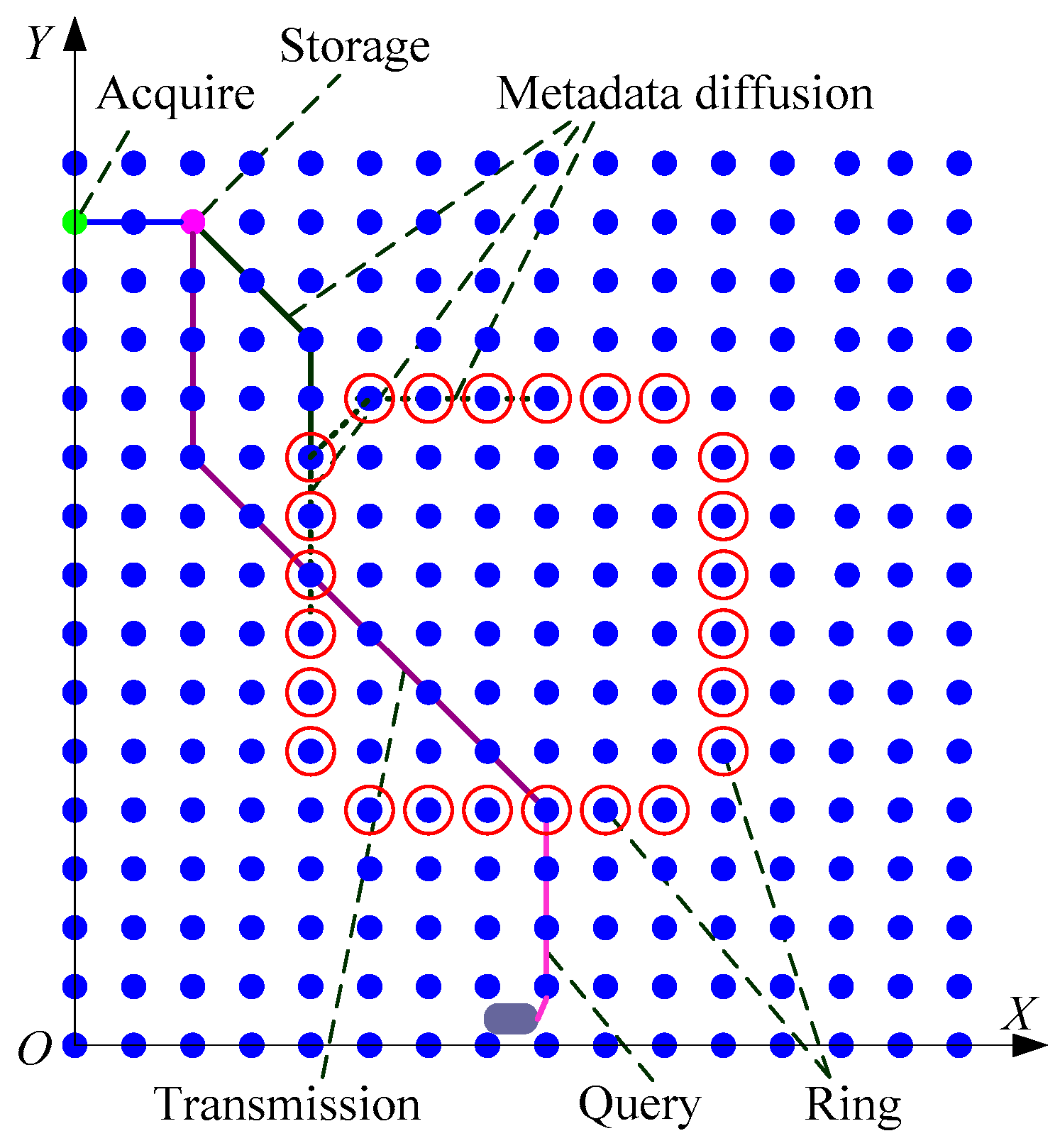
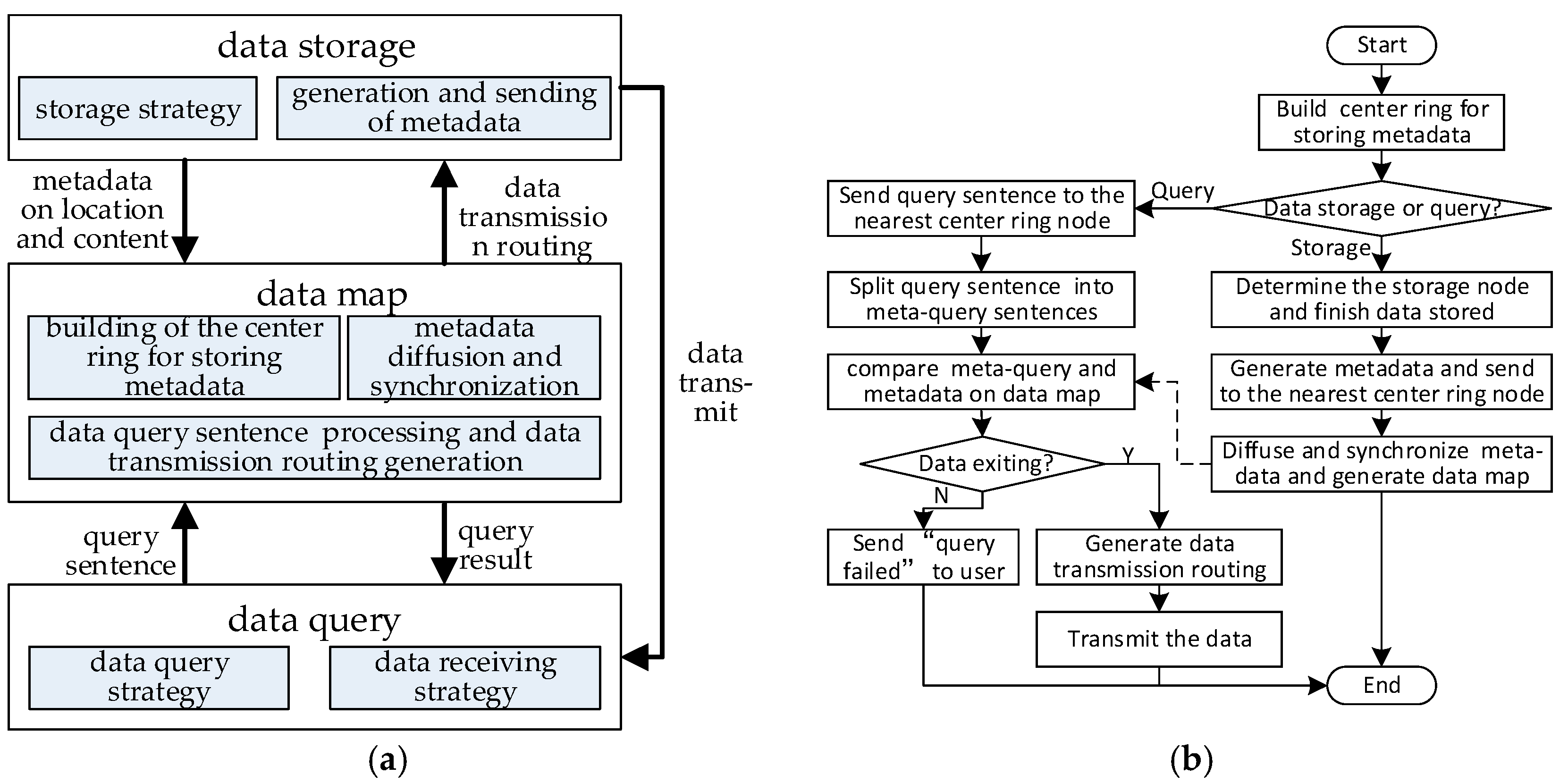
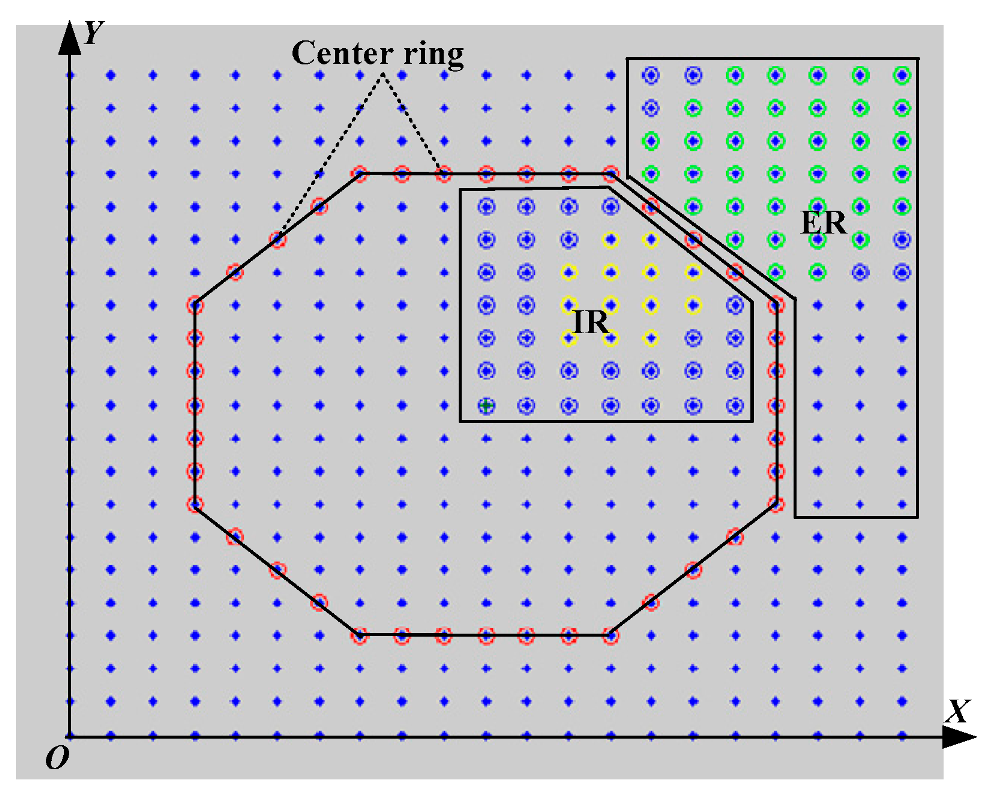
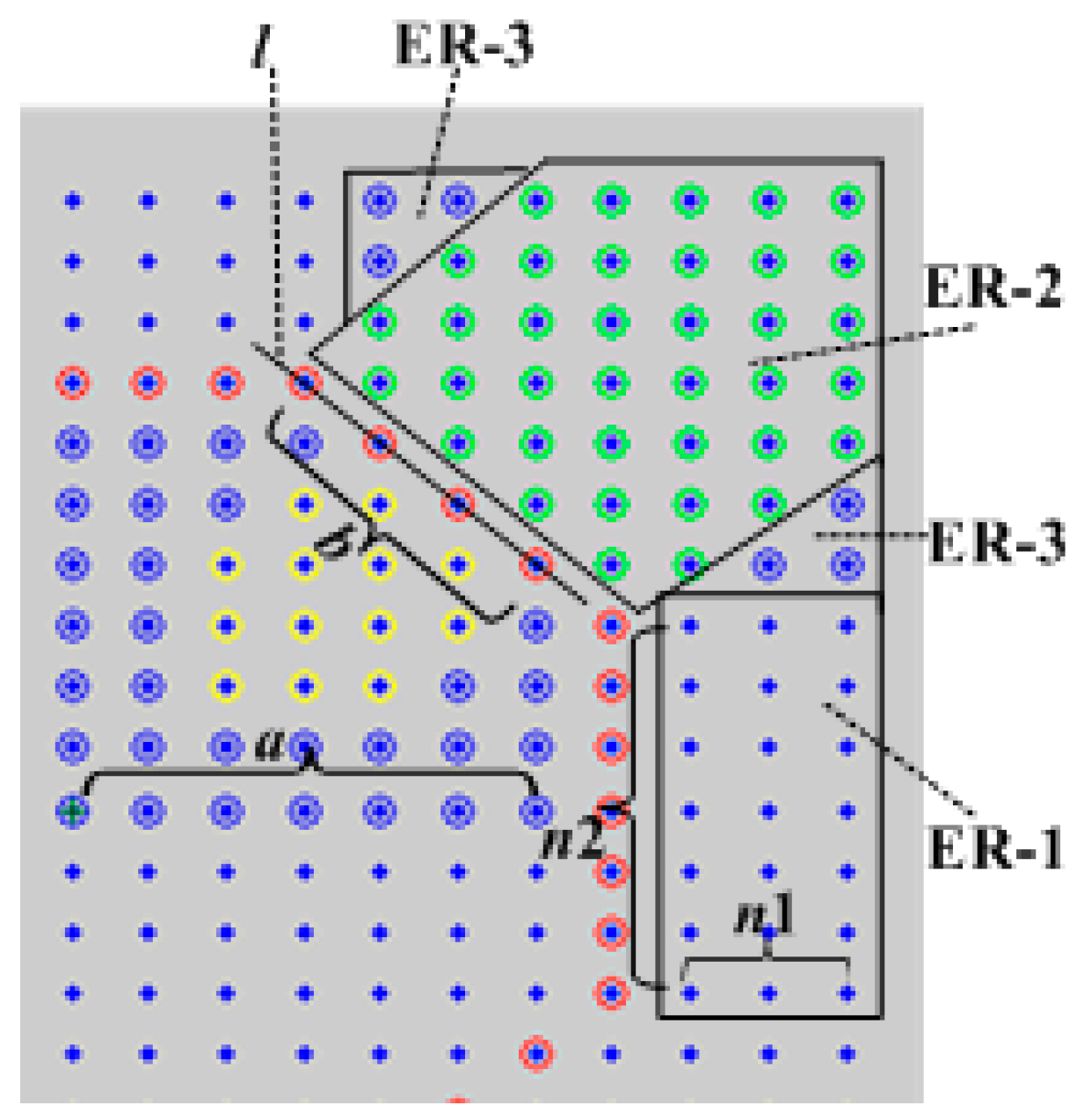
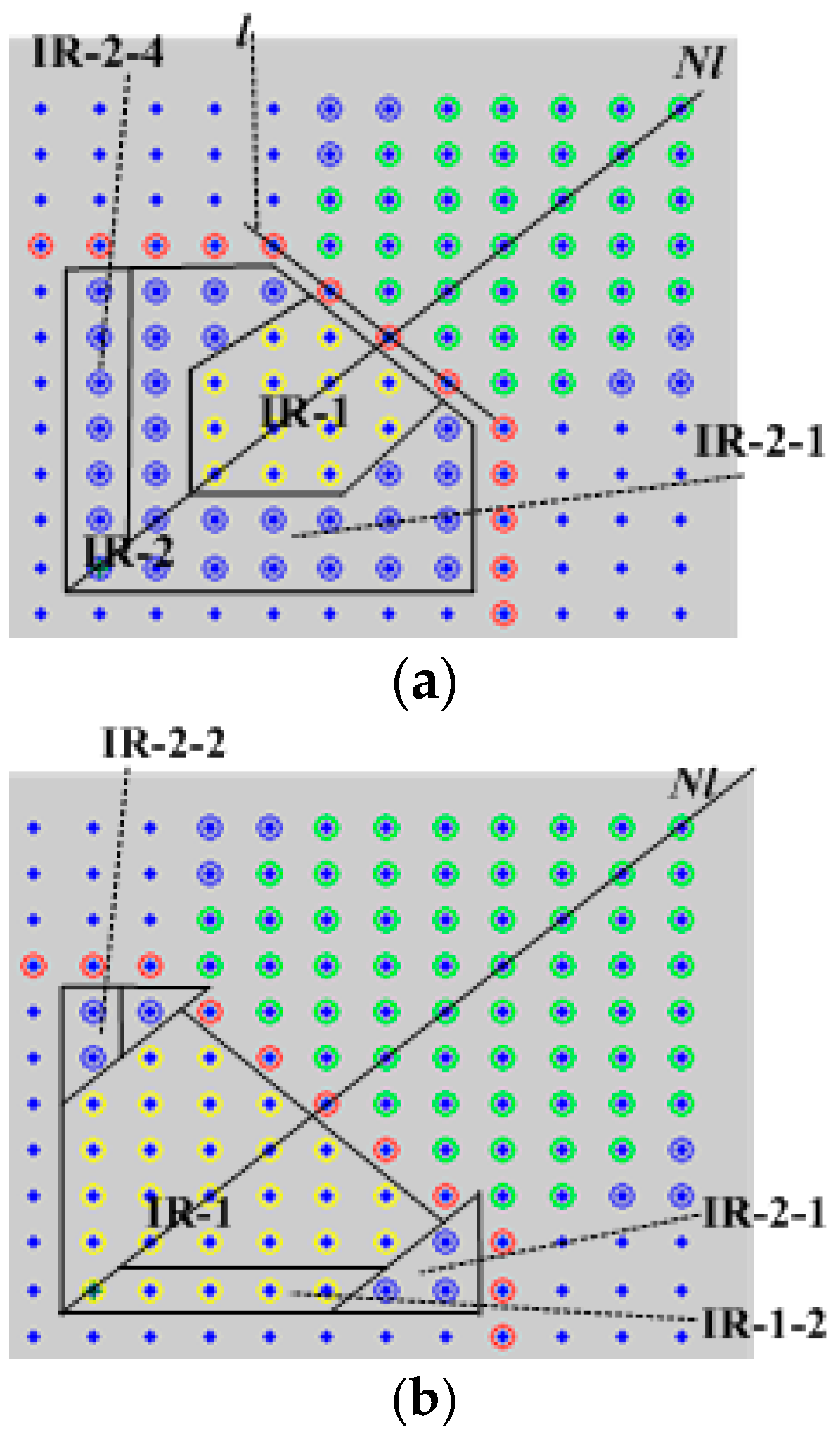
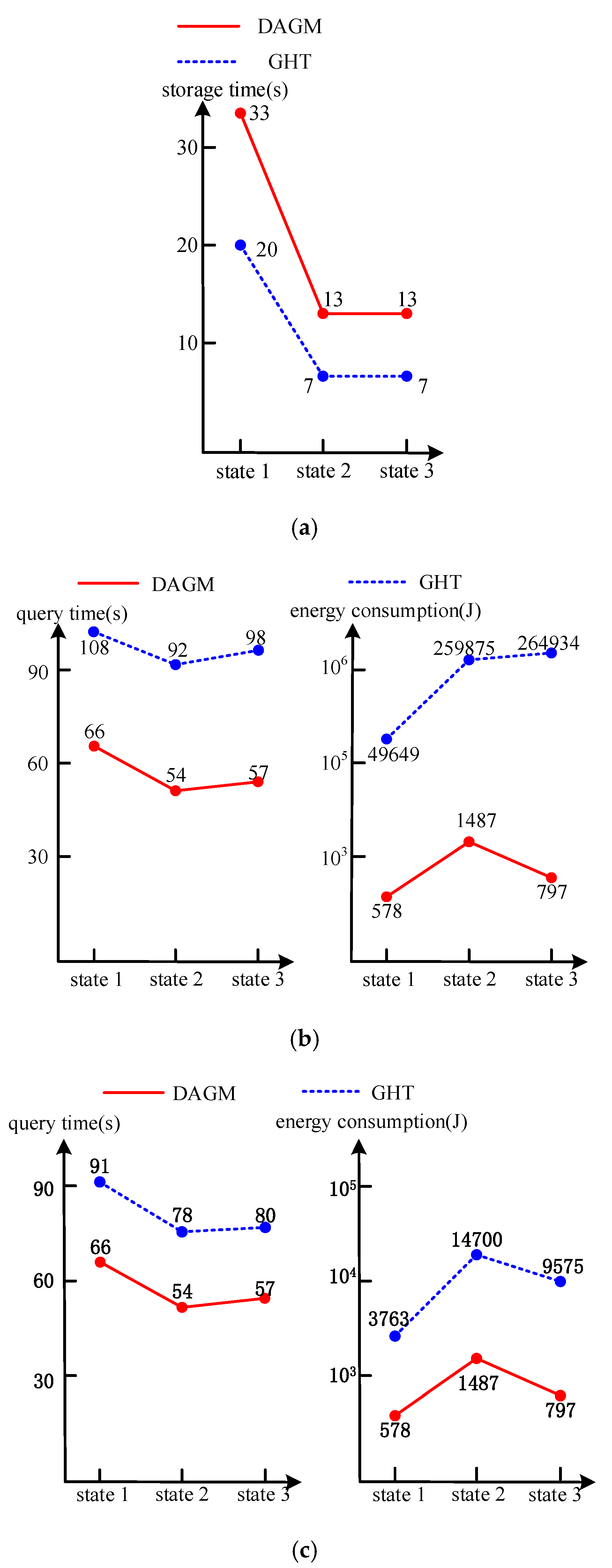
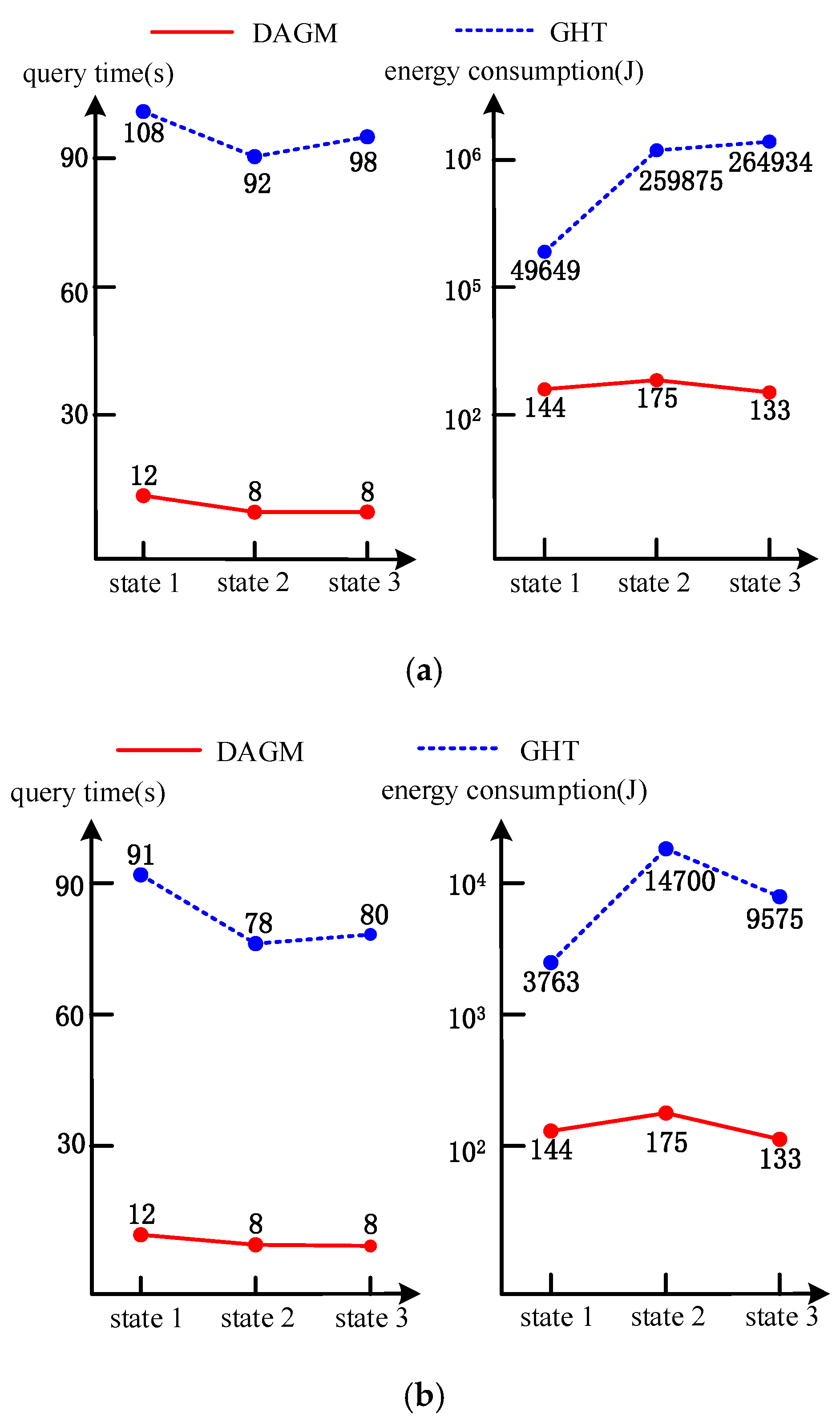
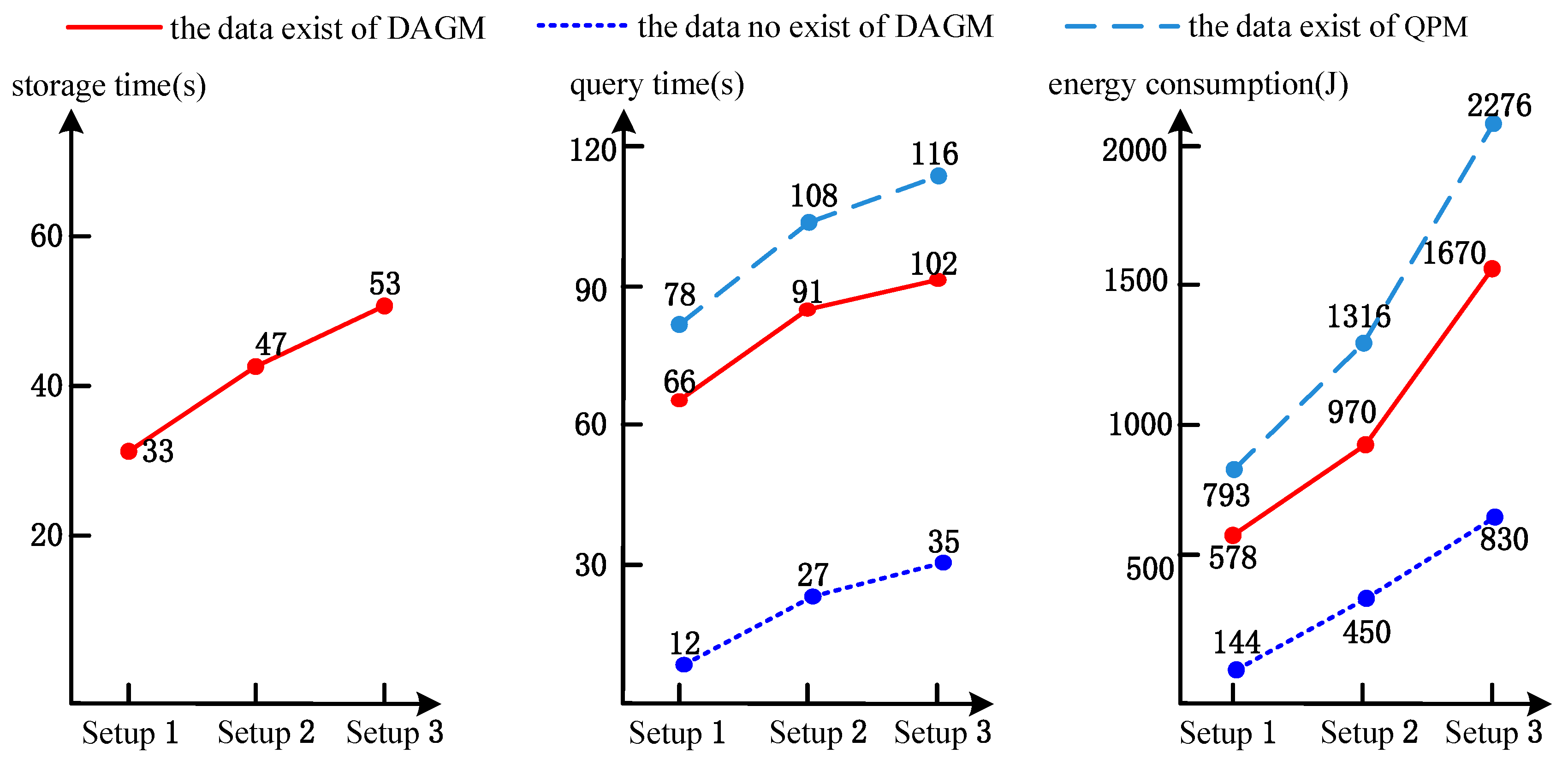
© 2017 by the authors. Licensee MDPI, Basel, Switzerland. This article is an open access article distributed under the terms and conditions of the Creative Commons Attribution (CC BY) license (http://creativecommons.org/licenses/by/4.0/).
Share and Cite
Wei, Z.; Song, M.; Yin, G.; Song, H.; Wang, H.; Ma, X.; Cheng, A.M.K. Data Access Based on a Guide Map of the Underwater Wireless Sensor Network. Sensors 2017, 17, 2374. https://doi.org/10.3390/s17102374
Wei Z, Song M, Yin G, Song H, Wang H, Ma X, Cheng AMK. Data Access Based on a Guide Map of the Underwater Wireless Sensor Network. Sensors. 2017; 17(10):2374. https://doi.org/10.3390/s17102374
Chicago/Turabian StyleWei, Zhengxian, Min Song, Guisheng Yin, Houbing Song, Hongbin Wang, Xuefei Ma, and Albert M. K. Cheng. 2017. "Data Access Based on a Guide Map of the Underwater Wireless Sensor Network" Sensors 17, no. 10: 2374. https://doi.org/10.3390/s17102374
APA StyleWei, Z., Song, M., Yin, G., Song, H., Wang, H., Ma, X., & Cheng, A. M. K. (2017). Data Access Based on a Guide Map of the Underwater Wireless Sensor Network. Sensors, 17(10), 2374. https://doi.org/10.3390/s17102374






